In July of 2017, my wife (then-girlfriend) and I were in the process of moving from Greenpoint to Palo Alto. We were in Austin, TX at my mother-in-law’s house, looking through her library of cookbooks.
“Oh, this one is really twist-o-flex,” I remember her saying. For context, my mother in law is a UC Berkeley grad, the daughter of an education professor at that same school: she is an extreme anti-Trump partisan. Nevertheless, the book was The Futurist Cookbook by Italian rightwing poet Filippo Tommaso Marinetti, who at the time I hadn’t heard of. I opened the book and began to read. Here are a few excerpts, drawn only from page 25.
Fillìa improvised a sculptured aerocomplex of chestnut flour, eggs, milk and cocoa in which planes of nocturnal atmosphere were intersected by planes of greyish dawn, with expressive spirals of wind piped in pastry.
…
The screens vanished and there appeared the mysterious soft trembling sculptured complex which was her. Edible. In fact the flesh of the curve signifying the synthesis of every movement of her hips was even appetizing. And she shone with a sugary down peculiar to her which excited the very enamel on the teeth of the attentive mouths of his two companions.
…
Inspired hands. Flared nostrils to guide teeth and fingernails. At seven The Passion of the Blondes rose from the largest oven in the kitchen, another tall sculptured complex of puff pastry modelled in descending pyramidal planes, each one of which had a slight curvature peculiar to a mouth, a stomach or a thigh, its own way of fluttering sensually, its own smile on its lips. On top a cylinder made from Indian corn turned on an axis and as it rotated faster and faster it flung out into the room an enormous mass of golden spun sugar.
I spent maybe an hour reading passages like these, having no idea about the politics or context associated with the writer or work, but in the minutes that comprised that hour, I was reordering my relationship with literature: I was reading an author who was speaking directly to me. There was a sense of forceful imagism; there was—later in the book—a sense of beer hall rhetoric in the meter and syntax, but fun and absurdity in the content; it was–somehow–a tendentious cookbook. I still consider Marinetti’s writing–especially The Futurist Cookbook–to be one of the best collections of fun literary writing; there’s nothing like it.
Upon searching the author after I put the book down, I learned that this was my first experience with rightwing literary aesthetics. By 2015, I had already travelled the fabled Bernie-to-Trump “psychographic” pipeline, but I hadn’t admitted to myself that I was actually rightwing. Part of that denial was my association of my own identity with arts and literature. Because of 80 years of massive cultural suppression and censorship of rightwing literary expression, I associated the right with philosophical, political, and military scholarship, where these ideas still appeared. But, here was an example of wonderful apparently rightwing literature. So, I sought to learn more. What I had at my disposal in 2017 was largely Wikipedia. Most importantly was the wiki for a book by antifascist scholar Philip Rees entitled, Biographical Dictionary of the Extreme Right Since 1890. The book is a reference guide to rightwing literary and political figures, and the wiki is one of the most thorough I’ve ever seen: it appears to be a list of every name in the book linked to their wiki pages.
This resource–at first the wiki, then the book itself–was absolutely essential for my development as a reader of rightwing literature; through it, I learned about a number of important authors, like D'Annunzio, Céline, Châteaubriant, Mishima, Pound, Hamsun, and others; of course, I was also closely following BAP, whose book I bought and read in August of 2018, and the larger frogosphere, where a number of these names–especially Mishima and Céline–appeared, too. At the same time, I read both English pastoral and Christian, especially Catholic, authors: Hardy, Hopkins, Dostoyevsky, Lawrence, Baxter, Thompson, Illich, Kingsnorth, and so on. I saw that there was a strong possibility that rightwing literature would emerge from the nexus of trads and frogtwitter, and indeed I remember the earliest posts from Lomez about his nebulous Passage Publishing, but it was one of a few publishing companies in this space. The difference was its association with the vanguardist memeworld associated with BAP, who is, in my view more than Yarvin, the charismatic epicenter of the online right. Soon, there was the first Passage Prize, in which Yarvin, a significant poet in his own right, was the judge of poetry and Zero HP Lovecraft was the judge of fiction.
To give you a sense of my interest in this development, the first email communication I have from Passage Press appeared at 5:58 PM on May 24th, 2022, under the following subject line. Passage Prize: Volume 1 ON SALE NOW. The “Patrician” edition of the compilation of Passage Prize winners was available for $400. At 5:58 PM, I was finishing a Crossfit workout; I remember reading the email at a red light on the car ride home. Less than an hour later, I received my second email from Passage Press: a receipt for that same book. It was obviously expensive, but the question before me was, Will you donate $400 to a cutting edge rightwing publishing company? The answer was automatic.
In the years since, Passage Press has grown; they’ve expanded their collection, with volumes from Yarvin, Land, and Sailer; they’ve introduced Passage Labs, with a strong first showing by raising almost $80,000 for their graphic novel adaptation of Pyotr Wrangel’s memoir Always with Honor; they’ve created merchandise, like the Gone Golfin’ hat; they’ve issued two works of original fiction, one of which I reviewed here, and on and on. Still, it’s hard to tell if Lomez’s twitter followers convert into customers. Certainly, there is a large demand for rightwing X posts, but longform literature is another question, and I have often wondered about the size of Passage’s readership. The Coronation Ball would be test of Passage’s substance. How many people, especially within Passage’s heavily Mountain-Western and West Coast network, would buy tickets for a black tie night of dinner and dancing in Washington DC? Again, my answer was almost instantaneous: I had ticket number 27, purchased within 24 hours of the first email to so-called Patricians.
I began the day of Sunday, January 19th, 2025 in Great Falls, VA, where I stayed at the beautiful home of a friend from high school, who was away with his family for the long weekend. I spent the morning doing a chest lift at LifeTime Fitness in Reston, VA; I had a big protein shake with creatine, then went to Whole Foods for some groceries. At noon, I went to the Latin Mass at St. Catherine of Siena, apparently the longtime parish of Justice Scalia. This experience is beyond the scope of this review, but both the priest and the parish community there seemed devout and intelligent.
Around 3:00, Paul McNeil (
) picked me up on his way from Charles Town, WV to an AirBNB in Washington DC that he and the men of the Wagonbox were using as a staging area. I had met Paul at a event in October of 2024, and, thanks to , we had been in contact in the previous weeks and days about the coronation ball. His organization was one of the sponsors. We drove among plow trucks and other cautious drivers as snow fell; we saw at least one car facing the wrong direction on the highway.The AirBNB was a brownstone row home, and I met a number of the Wagonbox guys, who were in various states of readiness for the event. They were chatting and drinking wine. Around 5:15, the rest of us dressed, tying ties, finding and fitting studs, and so on. Around 5:30, McNeil gave a brief pre-event talk, reminding everyone to behave themselves; he then said a prayer, and we called two uber XLs. Traffic in the city was reasonable for a major event weekend, and we arrived at the sprawling Watergate complex of entrances just after 6:00. Inside, we followed the flow of formalwear down a flight of stairs and to a table at the entrance, where a few young women–one of which I recognized but couldn’t place–checked our names and IDs against a list of attendees; they gave us pins and table assignments. From the entry control point, I could see that there were more than a hundred people in the reception area. In the extended period of cognition as I entered and became a part of the crowd over the next, say, 45 minutes, I became aware of Passage’s cultural position within the new right. Immediately, I saw significant figures within the movement:
and Elena Valez, for instance; I saw Yarvin, with his cummerbund awkwardly riding high on his shirt, and Michael Anton, impeccably dressed, standing probably close to 6’5”, nearby Chris Rufo. As I chatted with Brian T. Kennedy and his wife, Dasha Nekrasova brushed past me walking in the direction of the coat check; soon after, Mike strode past, pushing what looked like a four or five month old baby in a stroller.For one reason or another, I have been in rooms like this one in my life: I have been in rooms filled with local luminaries in my native Philadelphia, for instance: I have been in rooms–fundraisers and private events–with the governor, former mayors, local donor class, and business leaders; I’ve been to a private party at Arlen Specter’s apartment in Washington DC, in which there were a number of other senators and journalists and public figures. There were some similarities between this event and those events: as one surveyed the reception area, for instance, there were a number of almost cartoonishly telegenic faces, sculpted by elective surgeries. But there were differences, too. This room surely had a number of resume-tending careerists, but many of the celebrities–Yarvin, Dasha and Anna, REN, Keeperman–had made forceful attacks on some of the most sensitive and insane political assumptions within Western Liberalism at a time when the policing of liberal orthodoxy was akin to a reign of terror. Recently, for instance, Rufo wrote an extended X post about instances of terrorism against his family–an activist tracking down and screaming at his toddler son at a park, lying activists within Microsoft (his wife’s employer) campaigning to destroy her professional reputation, constant threats of death and rape sent to their private phone numbers, and so on. Naturally, the constellation of “civil rights” groups–ADL, SPLC, etc.–and associated public and private censorship organizations and journalists targeted him for his reasonable work. Raw Egg Nationalist was the target of a public doxxing campaign by “Hope Not Hate,” in which a stalker tracked him down through a farm at which he bought eggs; Yarvin has lived for years within the sight picture of the system, and of course Lomez was stalked through his tax documentation by the left wing activist front The Guardian. The bold names in this room earned their reputations not through repeating teachers’ pet odes to Emma Lazarus; they did so on the frontlines of an oppositional cultural movement that has willed itself into existence in the face of incredible misbehavior on the part of obsessed activists working attached to newspapers, governments, billionaires, and so on. Looking around this room, I was glad to see the assembled world of earned celebrity, genius, wealth–and even the attendant swarm of opportunistic climbers and careerists.
Soon, the Wagonbox guys wanted to take a picture.
In general, I’m pretty at ease chatting with people I don’t know, so I was having a good time drinking seltzer and hanging out in this increasingly crowded bar area. Soon, various event coordinators asked that we move to the dining room. We entered, and there were–maybe–35 tables assembled: white linen, stemware, and so on.
I was at Table 2, seated beside the owner of a software company, whose hair fell to the middle of his back; he wore 18th century formalwear. I spoke to him for much of the night and was glad to meet a fellow traveller. On the other side was a journalist for, I think, Human Events, who drove 11 hours from Indiana. She was determined to figure out the pecking order of the table, asking immediately who we were and what we did. At some point, she asked who Curtis Yarvin was. I told her that he was probably the most consequential intellectual in our sphere, with an enormous profile in the New York Times the day before. There he was there–at the table a few feet from ours. She frowned, excused herself, and was absent from the table for much of the event.
The first course was an “Heirloom Squash Soup,” which I think was cream based, with pumpkin seeds. It was thick and good, but I forgot to take a picture. During this first course, Lomez spoke about the manias associated with recent leftwing cultural history; he framed the cultural and political program associated with the Trump movement as normal and healthy.
He also spoke about his optimism–his full remarks, for anyone interested, are available on X.
The next course was seared scallops over cauliflower puree.
During this course, Natalie Winters, co-host of War Room, acted as MC. She asked Dasha and Anna to say a few words, and Anna spoke about the experience of booking Steve Bannon on Red Scare in 2020, during the height of the pandemic lockdowns.
The Bannon episode was the reason I first listened to Red Scare, incidentally. I remember their seeming awe-struck: I remember Anna saying she had recently been a waitress at a restaurant, and now she was hosting Steve Bannon on her podcast. In the remarks the night of this event, she recalled some of that awe: she said she had expected, until the moment she heard Bannon’s voice over the phone, that someone was pranking her. Now, they were introducing him as the keynote speaker before a room of 400 attendees in formalwear the night before Donald Trump’s second inauguration.
Bannon’s familiar–and frankly bulky–form appeared as a silhouette. Many attendees rose to their feet.
In the picture below, you can get a sense of the size of his stomach. I heard somewhere that he works constantly and maintains an unhealthy lifestyle. The next day, for instance, he would sit for an eight hour broadcast of War Room.
Still, Bannon gave one of the most powerful and rousing speeches I’ve ever heard. He openly attacked Trump’s supporters in Silicon Valley, saying that Mark Zuckerberg should be in jail: I think based on the fact that Zuckerberg made massive donations–something like $400 million–to dubious leftwing organizations during the 2020 election alone. Bannon made this comment within the larger context of praising those in the room who were committed to the cause before it was apparent they would win. He emphasized those who supported Trump and associated ideas during a time when these ideas were literally enough to expose oneself to financial ruin or even prison. There are probably thousands of examples, but one of the most illustrative, I think, was the case of USC professor Greg Patton, who was suspended for teaching students about the Chinese word “nga,” which functions like filler items, such as “uh” or “er.” The entire event is on film, and anyone can watch it–as I did at the time–and see that this man is utterly innocent. Still, students in the class wrote a letter to the dean of the business school, in which they–the “Black M.B.A. Candidates c/o 2022”–made the following nonsense statement.
We are burdened to fight with our existence in society, in the workplace, and in America. We should not be made to fight for our sense of peace and mental well-being at Marshall.
Instead of dismissing this complaint as a false pretense to smear an innocent person during a period of moral panic generated by anti-Trump billionaires, the dean suspended the professor. This was September of 2020, probably the same month I listened to Bannon on Red Scare. As readers know, there are innumerable other examples of this kind of vicious behavior on the part of leftwing revolutionaries, and this mania is the essential context for Bannon’s remarks.
The Trump coalition is—like all coalitions—delicate, and there’s been some hay made by Douthat, Pogue and others about the conflicts between tech and trads. The thesis of this substack has been since its inception a kind of third way between these positions, but Bannon isn’t exactly a trad: he’s a Nationalist. As a Catholic/Christian, I have certain philosophical reservations about extreme Nationalism. I am a genuine believer in the ideal of a multicultural working class coalition: I find race Nationalism–white, black, or other to be crude and primitive. That said, I don’t think Bannon is a white Nationalist, and insofar as he is a representative of the kind of hard-edged multicultural American Nationalism, I quite like him and his ideas. Still, I am more of a religious traditionalist. George Weigel mentions in his book To Sanctify the World that it takes something like 100 years for change to permeate the Church. But other important actors are not moving that slowly, for better and for worse. I find that Nationalists like Bannon–now and historically–have been among the bravest and fastest-moving actors in the face of inhuman pathogens, like Bolshevism, Marxist-Leninism, Stalinism, Maoism, and so on. Because of the Nationalist zeal for speed and bloodshed, they have–in countries like Germany, Italy, Spain, Chile, and so on–committed grave, world-historical acts of evil; therefore, joining and supporting them is morally fraught–not because of their views on race, but because of their views on the value of human life. Still, their tendency towards action means that Nationalists are often involved in the most dynamic operations against inhuman worldviews. If a Catholic/Christian wants to witness or support these operations, he will probably have to come to terms with Nationalists, if not Nationalism–as I did years ago.
As Bannon spoke, the next course arrived: “Filet Mignon and Pommes Aligot.” One thing to note about the food, which was good–in spite of the heat-lamp, 400-plates-at-a-time context–is the appropriate protein to carb ratio. The scallops were almost all protein, and you can see in the picture below that this course, too, was largely protein. Bulking bros like myself were appreciative.
Bannon descended the stage to ecstasies of applause–even after he’d directly challenged and insulted the probably 50% tech-employed crowd–and soon Cerno was speaking.
Cernovich, who has me blocked on X, is another person who was committed to antagonizing the revolutionary left when their stranglehold on the mainstream conception of morality made their lawfare and media manipulation appear appropriate—that is, when doing so was truly dangerous. He spoke from a position of credibility, and the topic of his talk was, roughly, “you can just do shit.” He meant that even when society appears censorious and tyrannical, you can still simply do whatever it is you want to do, such as host a New Right coronation ball for the election of Donald Trump in the Watergate Hotel.
He was right.
As he passed my table on the way to his seat, I mentioned that he had me blocked on X. He actually stopped to kind of apologize and said he blocks a lot of people–and in his tone, I sensed a genuine concern that I cared enough to bring it up. This was in contrast to Yarvin’s brusk dismissal of my attempt to say hi near the coat check. On the other hand, Michael Anton was very polite and shook my hand when I approached him. I was very glad to meet Anton, for the record, because I admire him and his writing very much.
During or maybe after Cernovich’s talk, the servers brought out Baked Alaska, maybe in honor of the internet personality still in jail for his part in the electoral justice protest on January 6th, 2021.
As a relatively diet conscious fitness guy, I considered whether I wanted to eat this much sugar. I did eat it, in part because I had never eaten Baked Alaska before, in part because I only drank one glass of wine over the course of the entire six hour event.
Finally, dinner was over, and hotel employees began to remove a dividing wall between the dining room and a dance floor. A band was already on stage and began playing immediately. There were already hundreds more people in the bar and reception area, and I spent more time hanging out, meeting and chatting with the newcomers, like
and Nate Hochman. I ended the night catching up with an old friend from the First Troop Philadelphia City Cavalry, who I did not expect to run into.This event, in my estimation, was an enormous success: in large part because of the crowd; a huge number of the most important figures in the New Right were present, but the private attendees were the most interesting to me. Still, the important fact is there is a substantive counterelite. We know that Liberalism–classical and otherwise–will continue to suppress and censor rightwing–or “androgenic”–cultural production; therefore, the task is to build out our own institutions, supported by our own consumers and readership. If this event was an indication of the level of development of our community, I’m glad to say that I left very impressed.






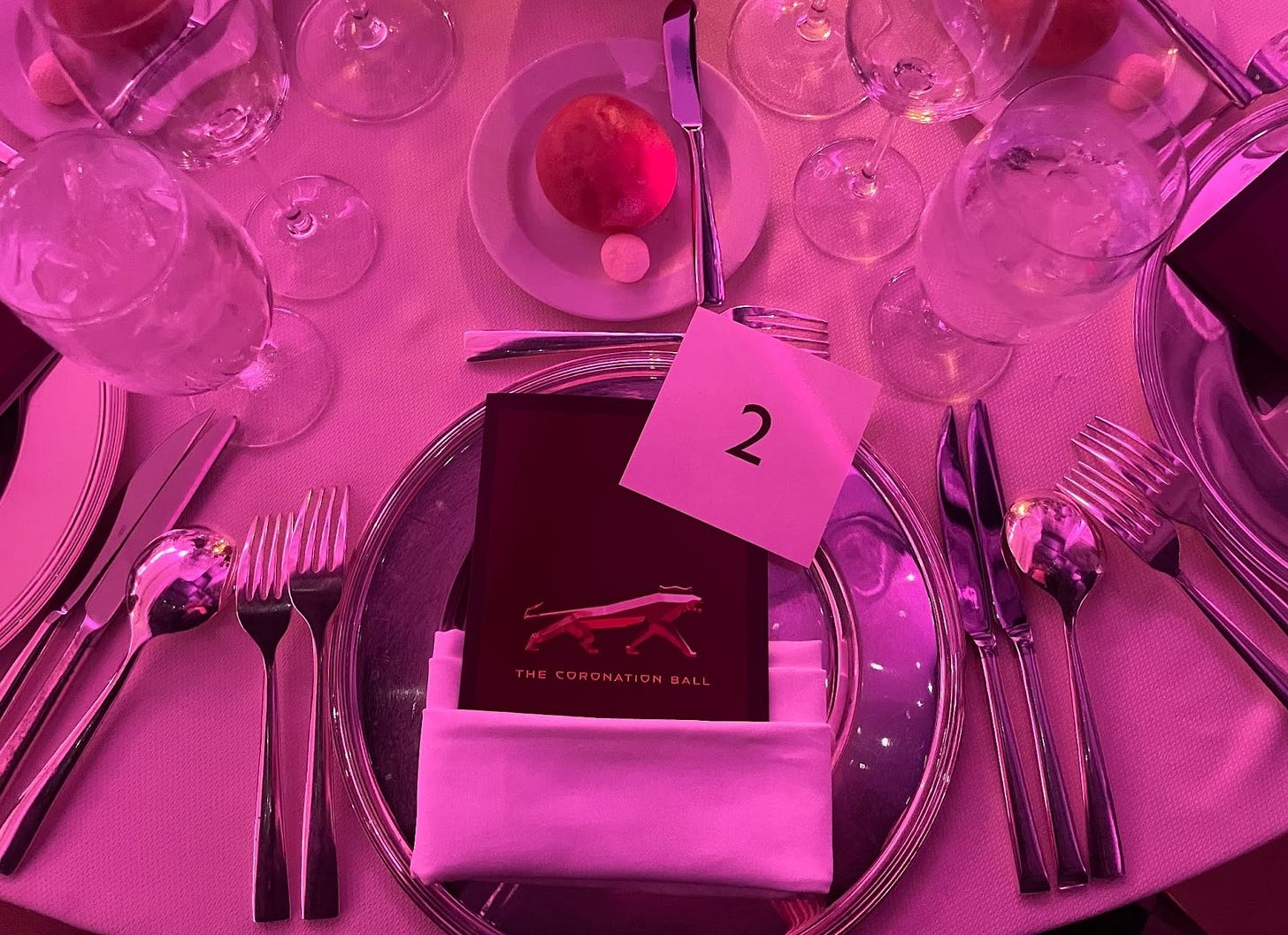





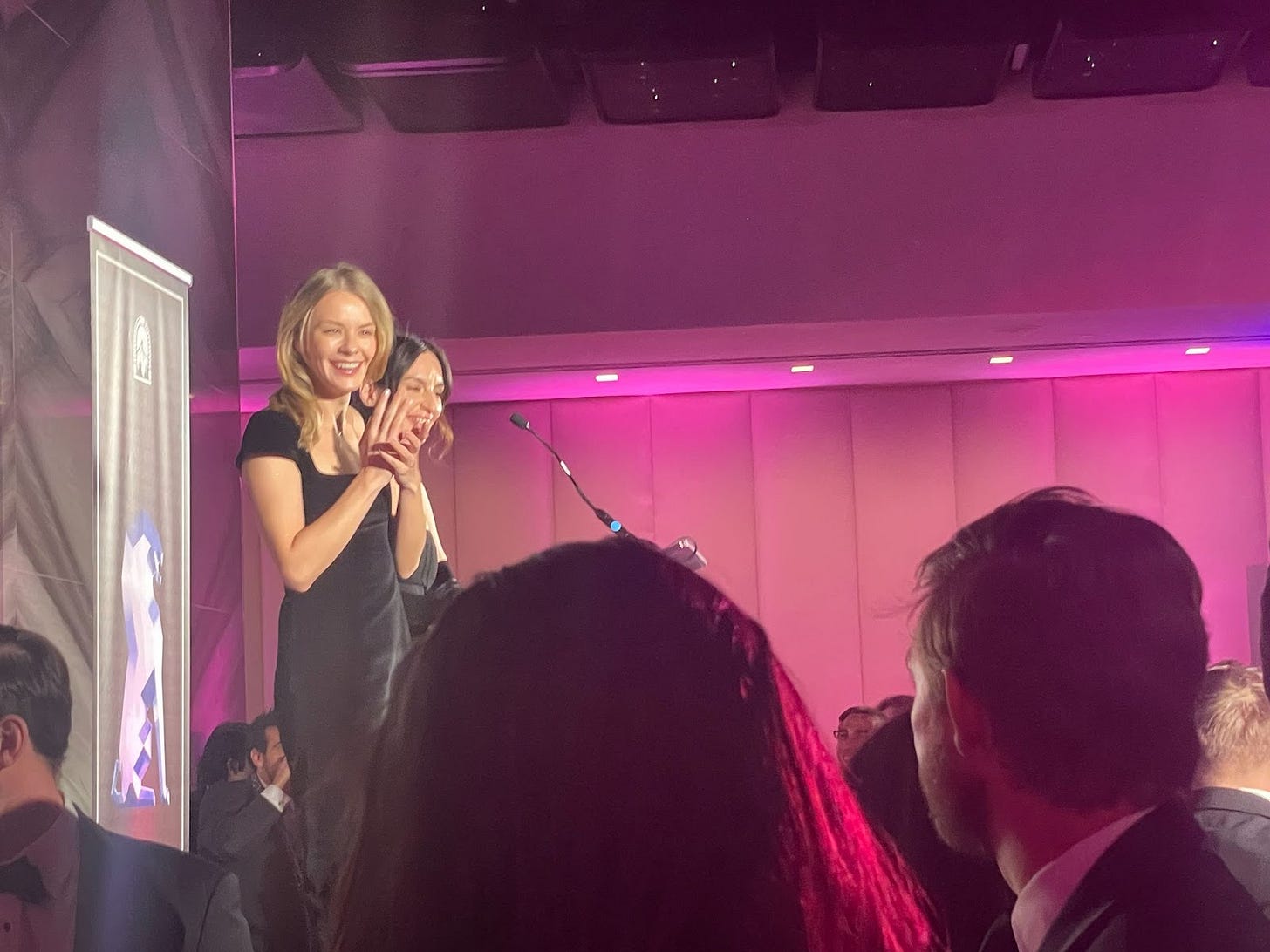
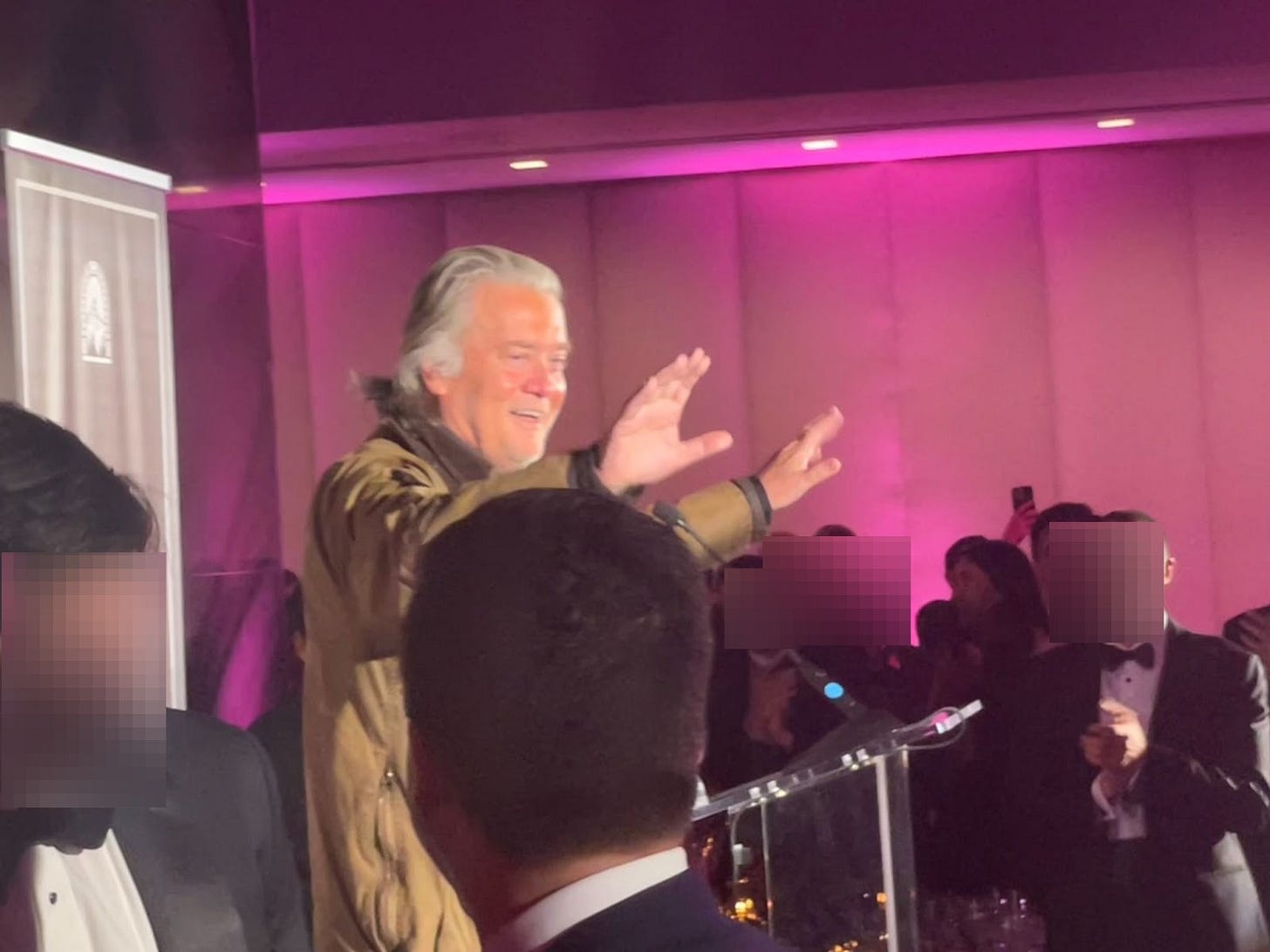
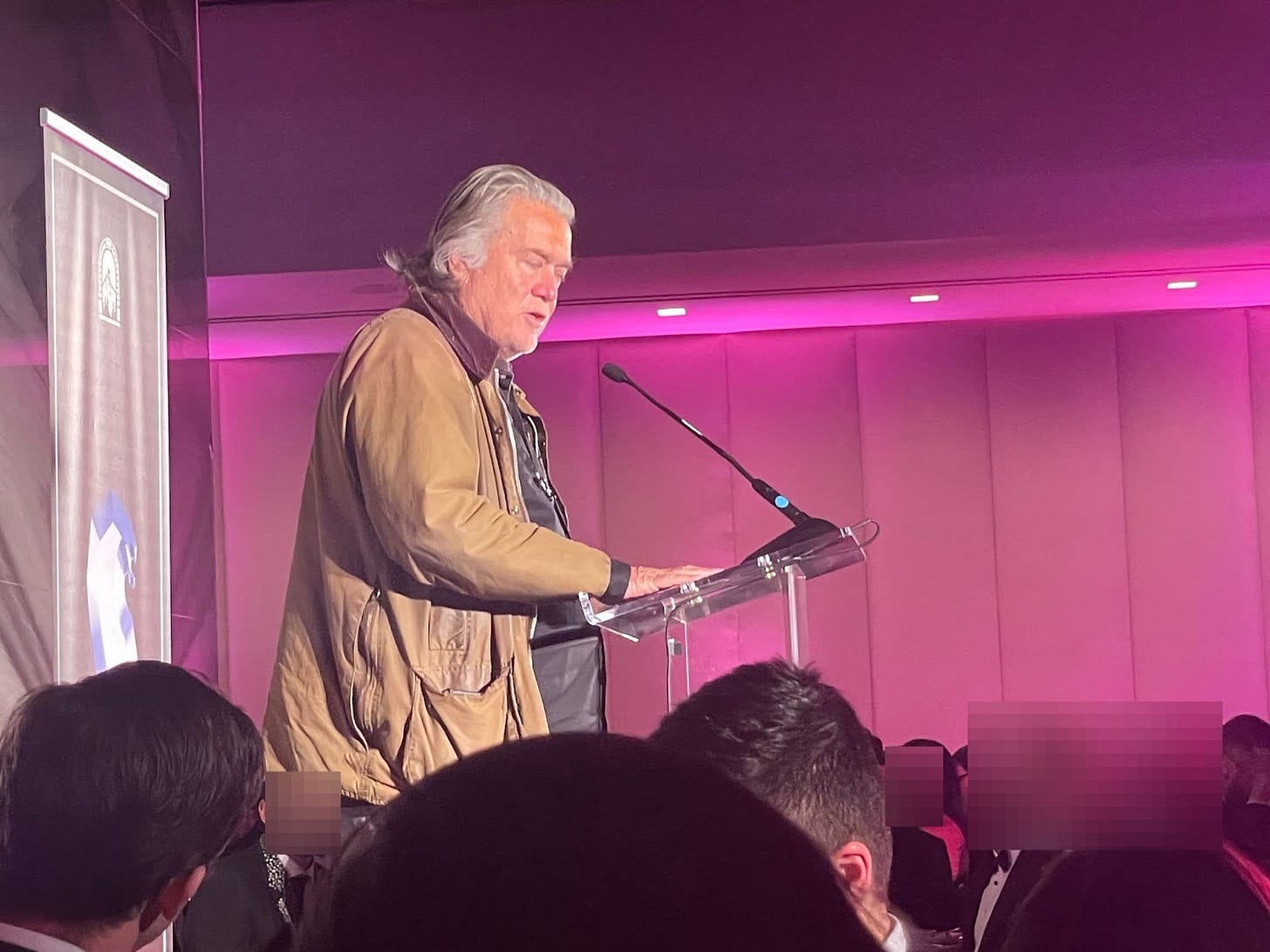
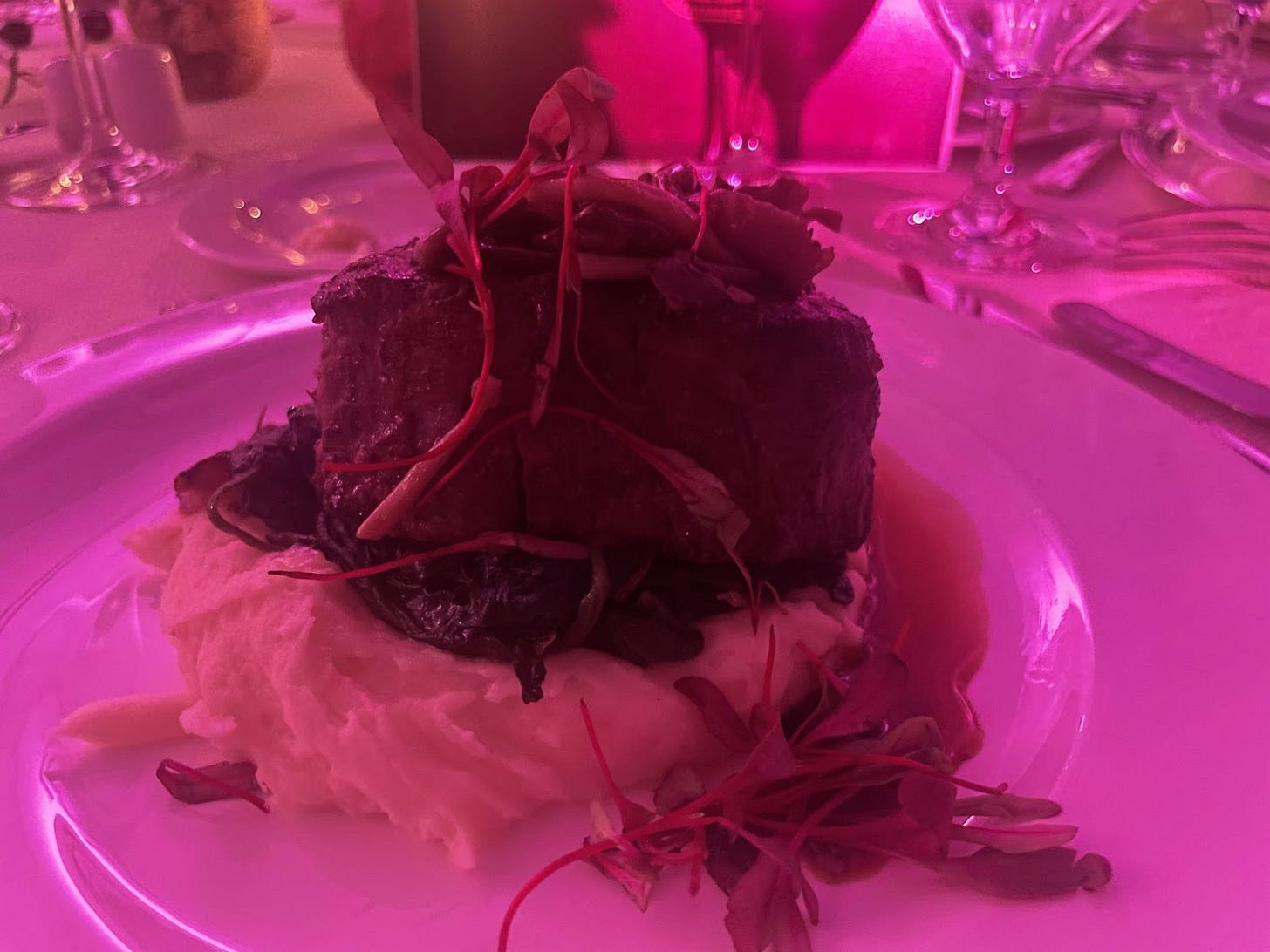
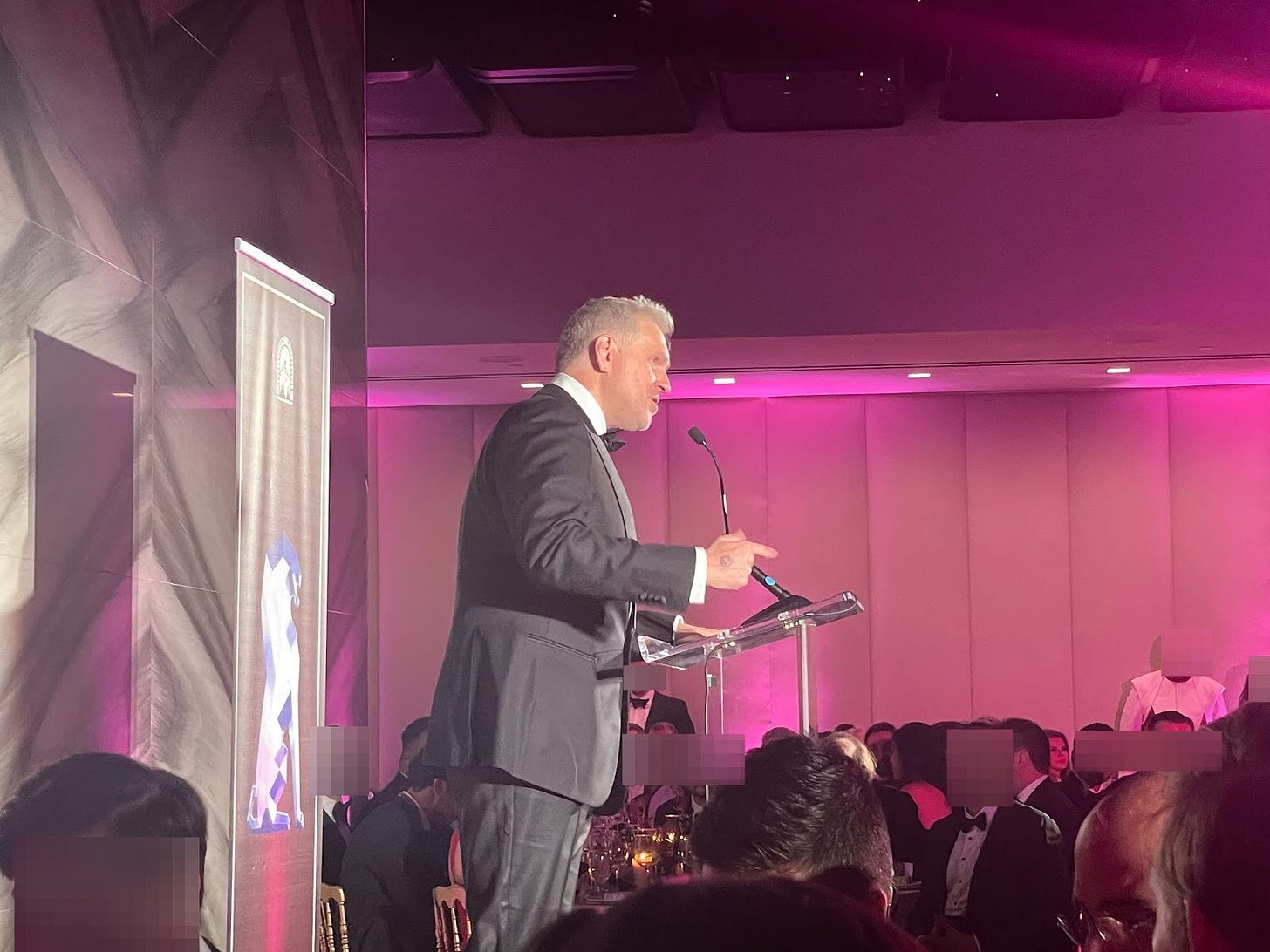

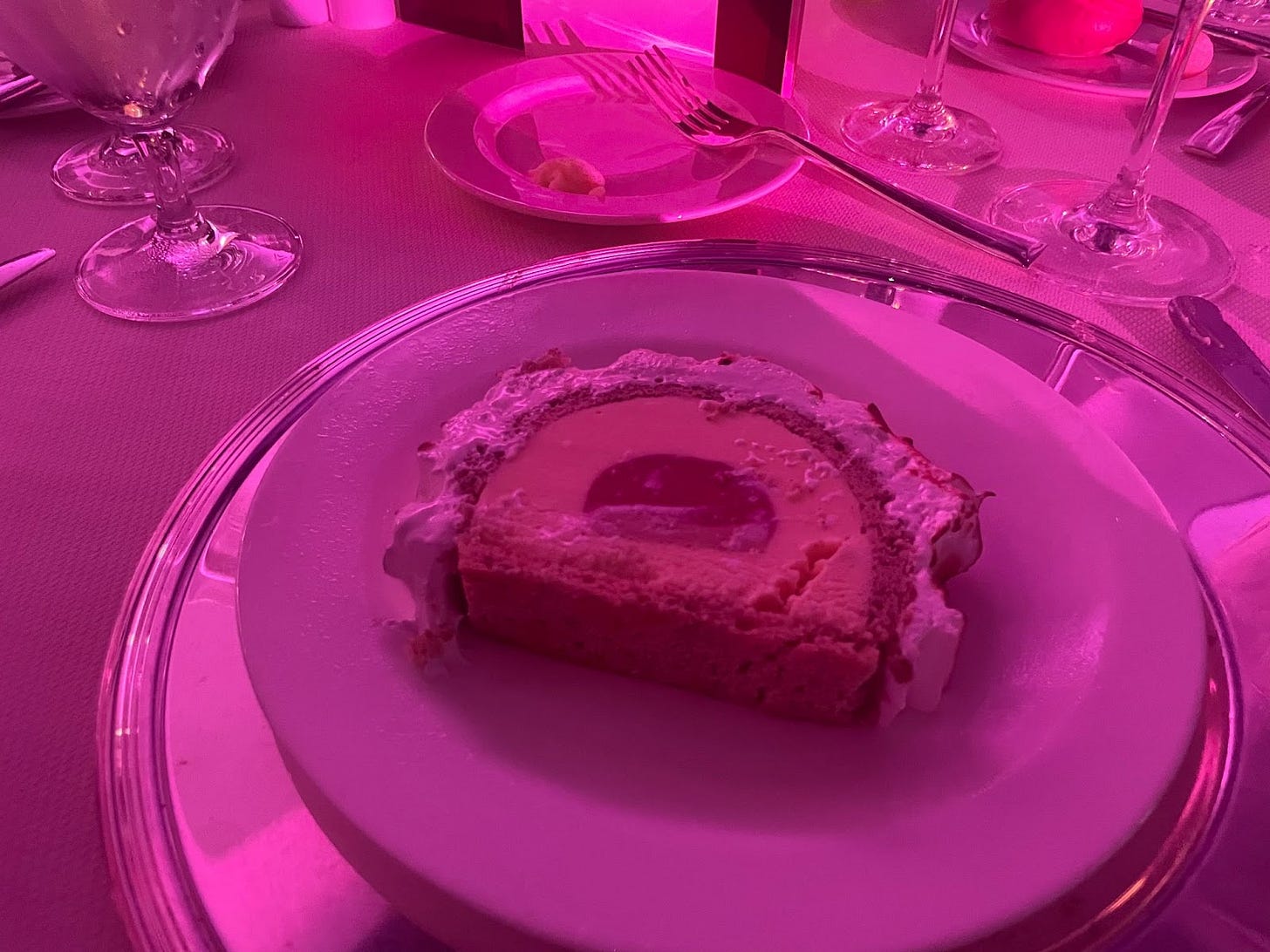
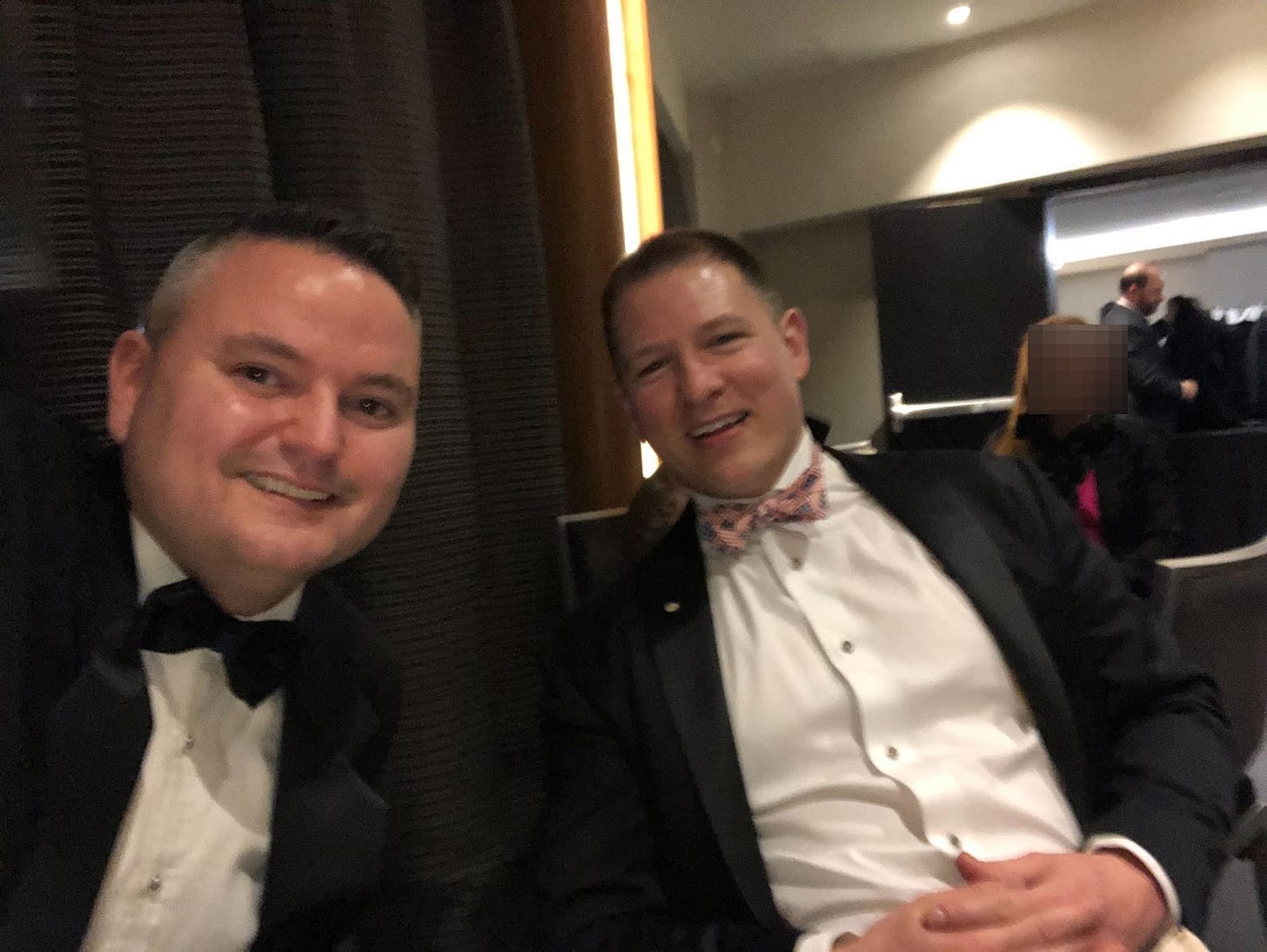
Very informative and interesting. Is Passage Press accepting submissions? Sure would like to show them some of my stuff.
Great acccount! Curious how much of a presence crypto had there - I believe the event was sponsored by the Remilia Corporation (the group that did the Milady NFT's).